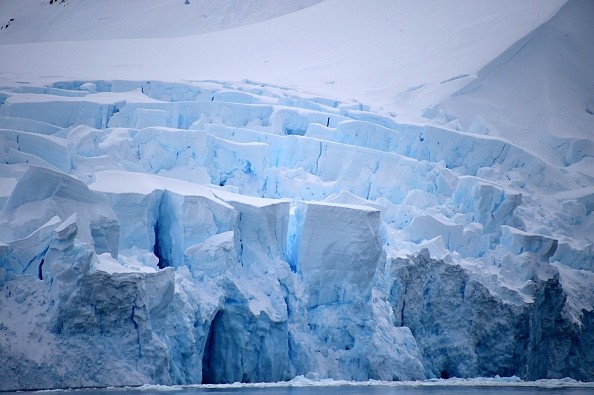Atmospheric oxygen levels may have decreased during the last 800,000 years due to glacial erosion.
Studying air bubbles preserved in Antarctic ice for up to 1.5 million years have uncovered the likely cause of the depletion of oxygen in the atmosphere for not less than 800,000 years.

How Weathering and Oxidation Affects Atmospheric Oxygen
According to Rice University's Yuzhen Yan, corresponding author of the geochemistry research published in Science Advances, scientists are aware that atmospheric oxygen levels were falling gradually in the late Pleistocene. When glaciation expanded and intensified at the same period, weathering was accelerated by the process itself.
The oxidation of metals is one of the most fundamental processes that break down rocks and minerals during weathering. An example is the corrosion of iron. When iron is exposed to oxygen in the air, a reddish oxide immediately forms.
According to a postdoctoral research associate at Rice's Department of Earth, Environmental and Planetary Sciences, Yan, when new crystalline surfaces from the sedimentary reservoir are exposed to O2, it generates weathering that consumes oxygen.
According to Yan, revealing organic carbon that has been buried for millions of years by glaciers might enhance the consumption of atmospheric oxygen.
Also Read: Decline in Earth's Oxygen Caused by Fossil Fuels, Experts Suggest
The Source and Sink of Atmospheric Oxygen
Yan collaborated on a 2016 research headed by Daniel Stolper, currently an assistant professor at the University of California, Berkeley, that analyzed air bubbles in ice cores to demonstrate that the fraction of oxygen in Earth's atmosphere has decreased by around 0.2 percent during the last 800,000 years..
Scientists from Oregon State University and the University of Maine and the University of California, San Diego studied bubbles in earlier ice cores to indicate that the O2 decrease started approximately 1 million years ago when the duration of Earth's glacial cycles more than quadrupled.
At some point 2.7 million years ago, Earth entered its current ice age. There were dozens of subsequent glacial periods. There were periods when the ice caps expanded, covering up to a third of the earth, and then receded.
Until nearly a million years ago, each cycle lasted around 40,000 years. When atmospheric oxygen levels started to fall, glacial cycles began lasting around 100,000 years, according to Scitech Daily.
Yan said that the reduction is due to the fact that the rate of O2 production is lower than the rate of O2 consumption. That is what scientists call the source and the sink, he continues. Source and sink are the two terms used to describe O2 production and consumption.

Importance of the Discovery
According to these findings, the decrease in O2 levels indicates that people are consuming more gas than previously thought.
According to Yan and colleagues' research, global weathering is the most plausible geological mechanism capable of absorbing enough extra O2 to explain the reduction.
When glaciers advance, the global sea level drops, and when they recede, it rises. There has been an increase in the amplitude of sea level fluctuations as the duration of glacial cycles has increased by more than double. The oxidizing force of atmospheric O2 would have been exposed to areas formerly covered by water as the coasts expanded.
The amount of chemical weathering caused by glacial erosion is difficult to estimate with any precision since the thickness of the ice cover varies from glacial cycle to glacial cycle.
Yan, on the other hand, claims that the research shows that it might extract enough oxygen to explain the reduction.
Related Article: Lack Of Oxygen Will Lead to 'Death' of Most Life on Earth in Billion Years, Say Experts
For more news, updates about oxygen decline and similar topics don't forget to follow Nature World News!
© 2024 NatureWorldNews.com All rights reserved. Do not reproduce without permission.




![Climate Change is Reducing Dust Levels Worldwide as Arctic Temperature Warms [Study]](https://1471793142.rsc.cdn77.org/data/thumbs/full/70320/280/157/50/40/climate-change-is-reducing-dust-levels-worldwide-as-arctic-temperature-warms-study.jpg)
